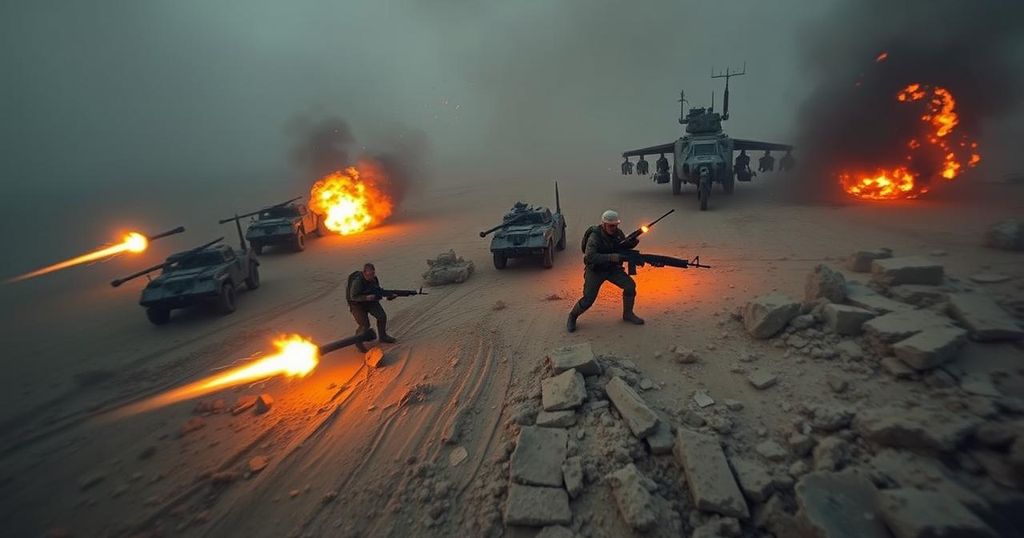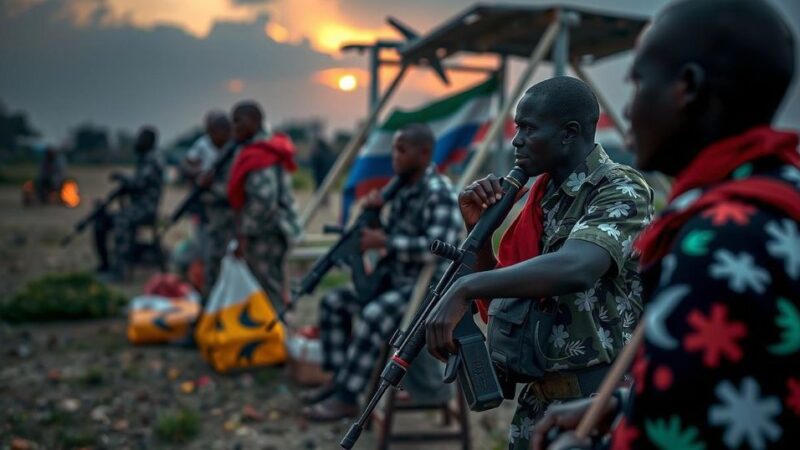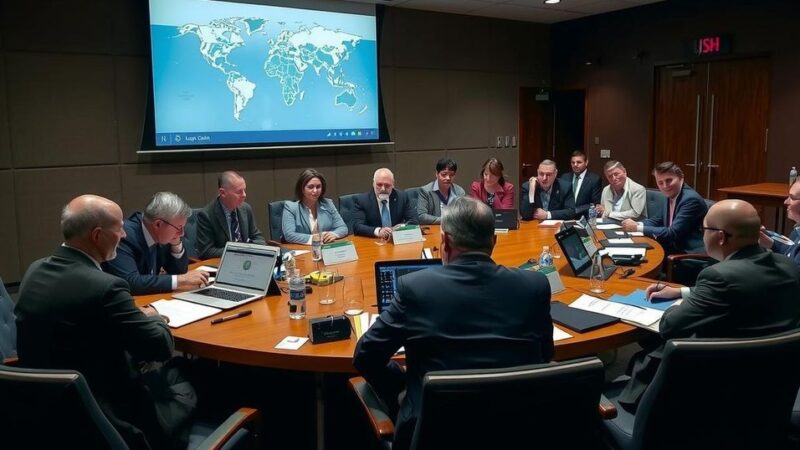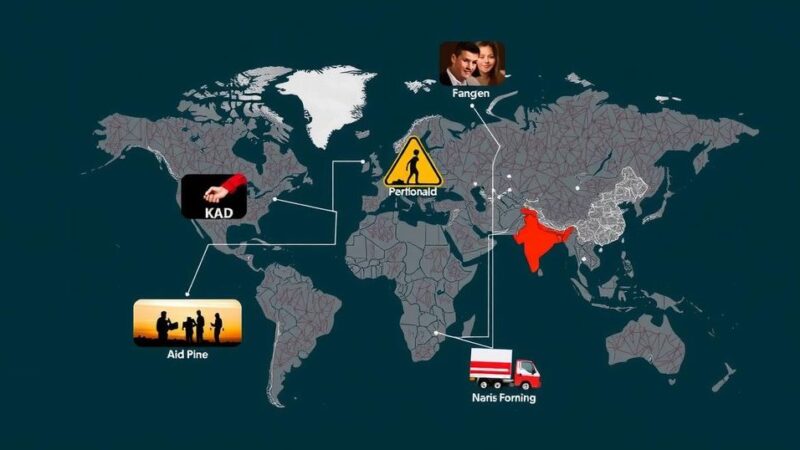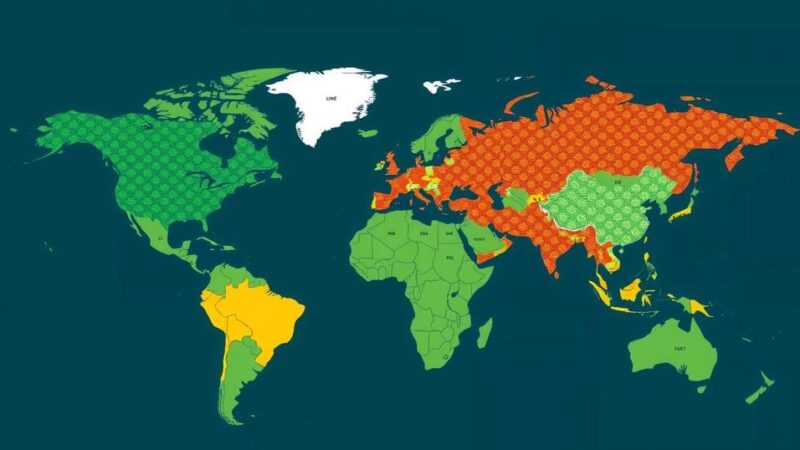The United States has conducted airstrikes against Iran-backed Houthis in Yemen utilizing B-2 stealth bombers for the first time. Concurrently, tensions rise in Lebanon due to Israeli actions against UN peacekeepers and humanitarian crises affecting 1.2 million displaced individuals. Ceasefire negotiations for Gaza remain stalled, highlighting the urgency for diplomatic resolutions amidst ongoing conflicts.
The United States has conducted airstrikes against the Houthi movement in Yemen, specifically targeting five underground weapons storage facilities. This marks the inaugural use of B-2 stealth bombers for such operations, following intensified hostilities in the Middle East over the past year. The strikes are perceived as a significant signal to Iran amid increasing tensions with U.S. ally Israel, particularly as Iran has engaged in recent ballistic missile attacks. In a related context, Israeli forces have reportedly fired upon a United Nations peacekeeping post in southern Lebanon, causing damage and highlighting ongoing conflict in the region. Concurrently, UNICEF has revealed that approximately 400,000 children are part of the 1.2 million individuals displaced due to the conflict involving Israel and Hezbollah. Additionally, ceasefire negotiations and discussions regarding the release of hostages in Gaza have stagnated over the past four weeks, indicating a period of quiet from all involved parties. Furthermore, the Israeli defense minister rebuked France for prohibiting Israeli firms from presenting their products at the upcoming Euronaval exhibition in Paris, arguing that such actions undermine Israel during times of war. France’s call for the cessation of arms sales to Israel amidst the ongoing conflict has drawn criticism from Israeli officials, who label it a disgrace. The timing of the U.S. airstrikes coincides with a complex backdrop of escalating military conflicts in the region. The Biden administration’s decision to utilize the B-2 bombers—even as standard weapons have sufficed—signals a commitment to deterring further attacks on regional partners. Defense Secretary Lloyd Austin emphasized that the U.S. will proactively intervene to protect civilians and allies, hinting at a stern warning to Iran regarding its ongoing aggression. The Houthis have vowed to retaliate against the U.S., reaffirming their intentions to target vessels in the Red Sea. This coalition, which includes Hamas and Hezbollah, remains defiant in their opposition to Israel, necessitating a ceasefire to halt hostilities. With conflicts in Lebanon, Gaza, and the broader region escalating, the situation remains precarious, especially in light of anticipated Israeli responses to Iranian provocations.
The U.S. airstrikes on Houthi facilities signify a significant shift in military engagement strategies concerning Iran-backed groups in Yemen. These operations, particularly using advanced B-2 bombers for the first time against the Houthis, reflect a broader military policy of deterrence against Iran, especially amidst rising tensions with Israel. Concurrently, the crisis in Lebanon, exacerbated by conflict with Israel and allied groups such as Hezbollah, showcases the humanitarian ramifications, with UNICEF reporting large numbers of displaced individuals, particularly children. The stalled negotiations for ceasefires in both Gaza and Lebanon further complicate the geopolitical landscape in an already volatile region, where hostilities between various factions—including regional alliances with Iran—threaten to escalate further. France’s diplomatic actions concerning Israeli participation in defense exhibitions underline the growing divide among nations amidst the conflict.
The recent U.S. airstrikes against the Houthis in Yemen represent a notable development in military responses to Iranian affiliations and underscore the growing complexities of regional security. The ongoing humanitarian crises in Lebanon and the stalled peace negotiations in Gaza highlight the dire consequences of these conflicts. Furthermore, international diplomatic tensions, particularly between Israel and France, indicate a shifting landscape of alliances and oppositions. As hostilities continue, the potential for escalation remains significant, urging the need for continual dialogue and intervention to address both military conflicts and humanitarian challenges.
Original Source: www.cnn.com
